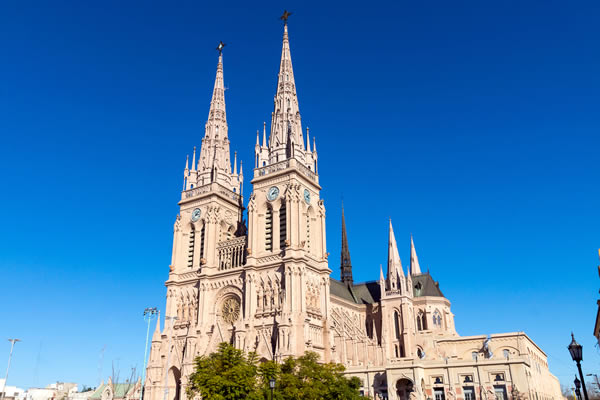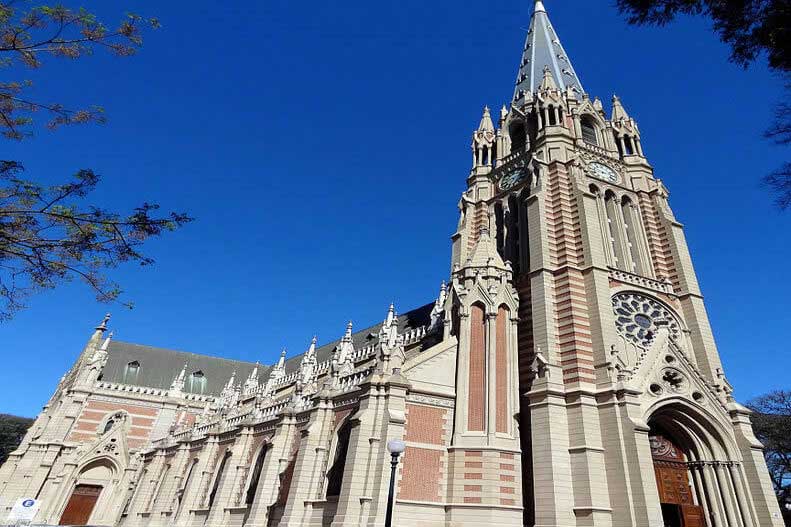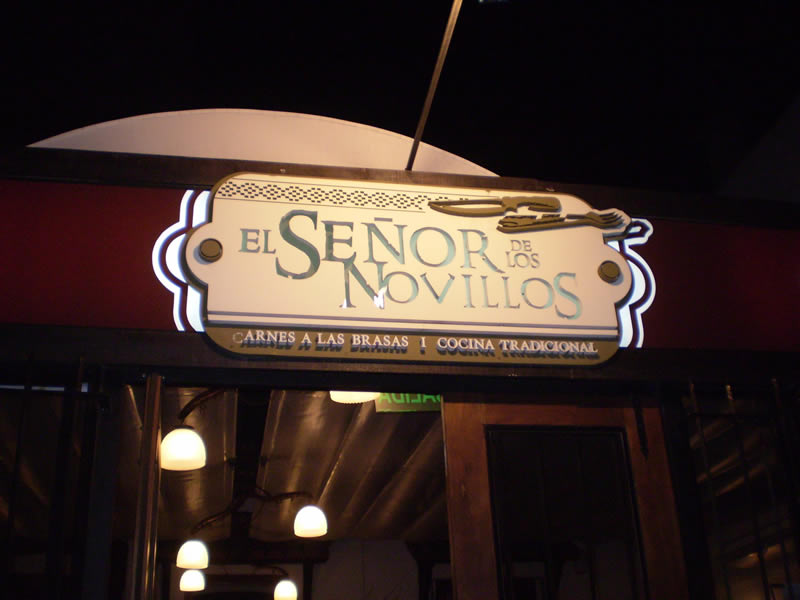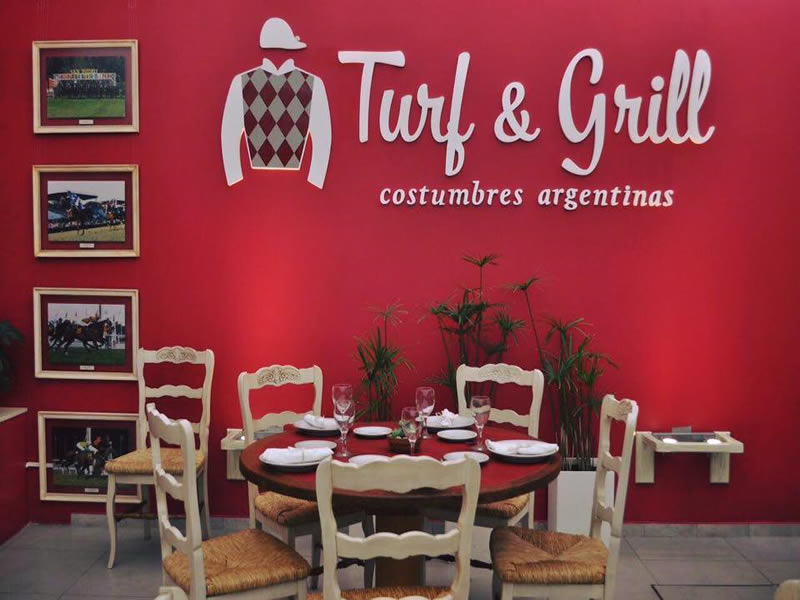In front of the Basilica of Luján, where thousands of faithful take photos to appreciate the temple, the Plaza Belgrano extends: an immense space that every October 3 welcomes the faithful who go on pilgrimage to the city to ask and thank the Virgin. On average, Luján receives nine million visitors per year from all over the world.

Photo: laverdadonline.com
But beyond that, the city offers multiple attractions, most of them related to our history: the Enrique Udaondo Graphic Museum, created to reconstruct the most important facts of the founding of the country; the house of Viceroy Sobremonte, where General Beresford and other high-ranking English soldiers were detained; the Cabildo, which functioned between 1755 and 1825 until it was closed by Bernardino Rivadavia; the Transport Museum, the National Museum of Fine Arts, the Municipal Museum Casa de Florentino Ameghino and the Automobile Museum.
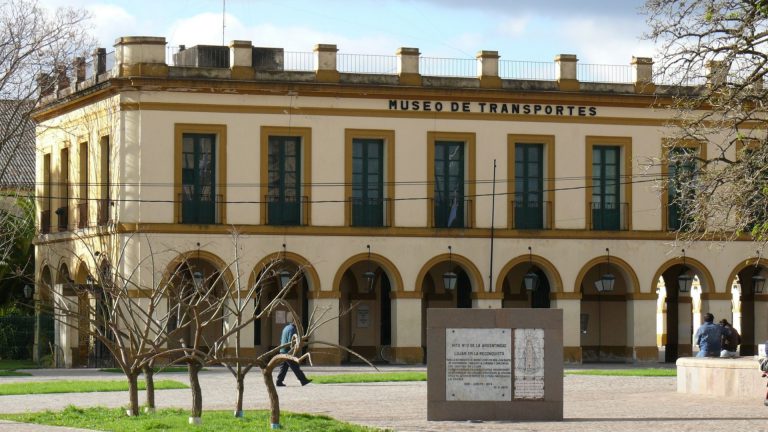
Photo: bafilm.gba.gob.ar
You can also do recreational activities on the Luján River, such as a catamaran ride, and tour the riverbank where the Florentino Ameghino Park is developed, designed by the famous architect Carlos Thays. Another must-see area is the Nature Reserve, with great examples of the local flora and fauna. Something different? It is a great opportunity to take a hot air balloon ride. Yes! in the best Cappadocia style, but just one hour from Buenos Aires.

Photo: lujan365.com.ar
Last but not least, near Luján are Carlos Keen and Tomás Jofré, two towns that became gastronomic poles thanks to their wide range of typical still life meals and roasts for the whole family. They are ideal places to go with grandparents and have a glass of Hierro Quina with cola and lemon drink and accompany with a good San Lujanino cheese and salami.
How to get there from the City of Buenos Aires?
- By car, take Acceso Oeste, National Route 7 to kilometer 67.
- By bus, line 57 from Plaza Italia to the Luján Bus Terminal.
- On the Sarmiento Train, leaving from Once on the Once-Moreno Branch and combining at the terminal with Merces. Get off at Luján station.
A little history.
Luján has a very important religious history but also a fundamental role in the origins of the country. In 1536, during the first foundation of the City of Buenos Aires, Don Pedro de Mendoza sent his nephew, Captain Pedro de Luján, to locate the most convenient lands to install places, but they were attacked and the mission failed. From that fact, the river that circulated through the area received the name of Luján. In 1580, during the second foundation of Buenos Aires, the area became part of the Camino Real that communicated Buenos Aires with Upper Peru.
Along that same road a cart was going to Córdoba with a very special order. It was an image of the Virgin Mary that had been sent from Brazil to Buenos Aires and had to go to that province at the request of a Portuguese named Antonio Farías de Sá. However, when it passed through one of the parts of the Luján River, the cart stopped and there was no way for the oxen to resume their walk. They tried to remove the loads but the cart did not advance, until they left out the image of the virgin and the oxen decided to start. Those present interpreted it as a sign, left the image and continued on their way.
In 1763 the first sanctuary was inaugurated, but the annual celebration corresponds to May 8, 1887 when Pope Leo XIII celebrated the canonical coronation of the image, and it was he who promoted the construction of a temple to venerate the Virgin. The Basilica Nuestra Señora de Luján was built between 1887 and 1935 by numerous architects. It is in the neo-gothic style. It has 2 106-meter towers with a large cross on each one, 17 bells brought from Milan and 3 naves that form a total length of almost 100 meters. The historical image is in a dressing room that is accessed from the imposing main altar, which has fourteen columns of Carrara marble. At a lower level, which occupies the entire floor, is the Crypt with images of all the invocations of the Virgin in each Latin American country and also of the patrons of different countries of the world, mainly Europe.
